Complete List of ALL 433 National Park Service Sites
America’s national parks system spans the entire country, from Alaska and Hawaii to Florida and Utah. All 50 states and the District of Columbia have one or more National Park Service (NPS) sites. This vast system also includes places in overseas territories like Puerto Rico, the U.S. Virgin Islands and American Samoa.
Together, all these National Park Service sites—whether they’re battlefields, scenic rivers, historic sites, memorials or something else—conserve and preserve significant parts of America’s natural, cultural and historical heritage.
Currently, there are 433 individual NPS sites in the United States, covering over 85 million acres.
There are no fewer than nineteen different naming designations. From national monuments and national seashores to national memorials, military parks and the “actual” national parks, this variety is the perfect reflection of the diversity of the United States. You can read more about the national park system designations on the NPS website.
Whether you’d like to learn about a certain period of American history, hike in some of the world’s most spectacular landscapes, see iconic wildlife or enjoy beautiful architecture, America’s national parks system covers it all.
Complete List of All 433 U.S. National Park Service Sites
Here’s the full list of all 433 U.S. National Park Service sites, including the 63 national parks.
National Battlefields (11)
One of four types of National Park Service units related to American wars and the military, national battlefields preserve the site(s) of historic battles and skirmishes. They include significant sites from the French and Indian War, the Civil War and the American-Indian War.
- Antietam National Battlefield, Maryland
- Big Hole National Battlefield, Montana
- Cowpens National Battlefield, South Carolina
- Fort Donelson National Battlefield, Kentucky and Tennessee
- Fort Necessity National Battlefield, Pennsylvania
- Monocacy National Battlefield, Maryland
- Moores Creek National Battlefield, North Carolina
- Petersburg National Battlefield, Virginia
- Stones River National Battlefield, Tennessee
- Tupelo National Battlefield, Mississippi
- Wilson’s Creek National Battlefield, Missouri
National Battlefield Parks (4)
Just like national battlefields, national battlefield parks preserve sites related to major wars in U.S. history. They usually consist of more than one site or at least a relatively large area related to one or more historic battles.
Note that several other important battlefields in the United States are designated as national monuments, national historical parks or national historic sites.
- Kennesaw Mountain National Battlefield Park, Georgia
- Manassas National Battlefield Park, Virginia
- Richmond National Battlefield Park, Virginia
- River Raisin National Battlefield Park, Michigan
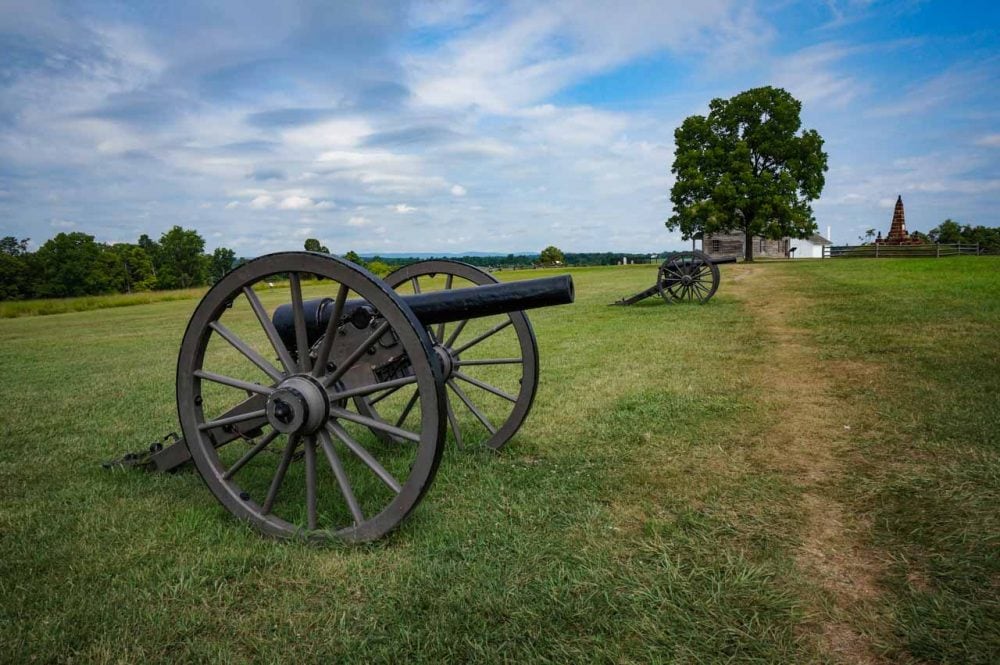
National Battlefield Sites (1)
The only national battlefield site that currently exists is in Mississippi. Although a slightly different designation and smaller, it is similar in features and characteristics to battlefields and battlefield parks.
- Brices Cross Roads National Battlefield Site, Mississippi
National Military Parks (9)
National military parks preserve sites and areas related to major events in America’s wars. Most of these parks are Civil War parks. One is related to the Revolutionary War and another to the Creek War of 1813-1814.
- Chickamauga and Chattanooga National Military Park, Georgia and Tennessee
- Fredericksburg and Spotsylvania County Battlefields Memorial National Military Park, Virginia
- Gettysburg National Military Park, Pennsylvania
- Guilford Courthouse National Military Park, North Carolina
- Horseshoe Bend National Military Park, Alabama
- Kings Mountain National Military Park, South Carolina
- Pea Ridge National Military Park, Arkansas
- Shiloh National Military Park, Tennessee
- Vicksburg National Military Park, Louisiana and Mississippi
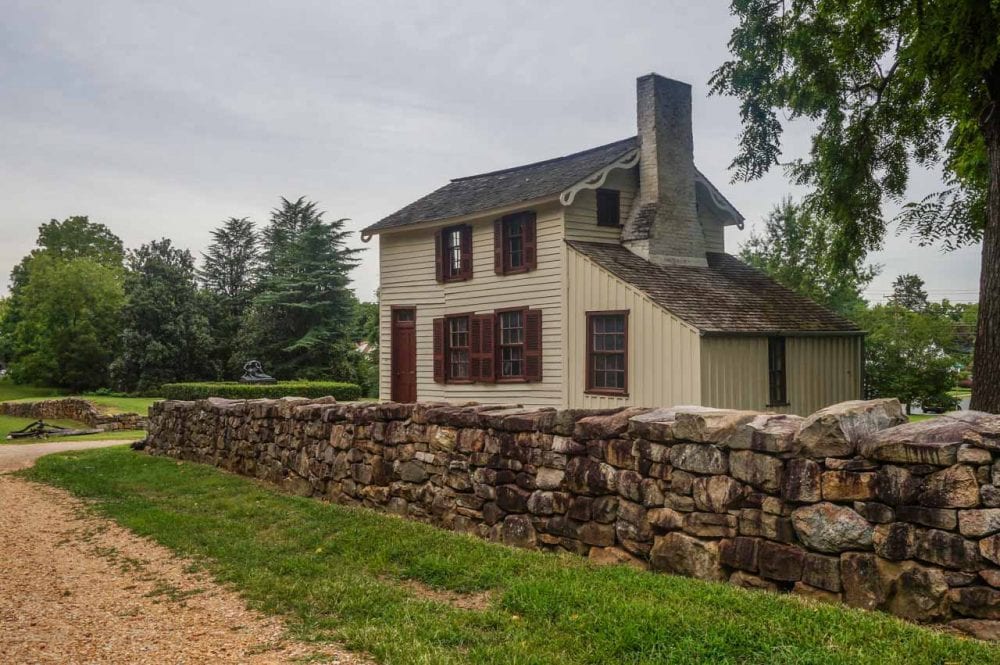
National Historical Parks (63)
Larger and more complex than national historic sites, national historical parks preserve areas associated with important historic events, places and/or persons.
This designation includes an extremely wide range of national parks and features, from U.S. presidents to artists and Native Americans, from maritime history to war sites, urban areas and political events.
- Abraham Lincoln Birthplace National Historical Park, Kentucky
- Adams National Historical Park, Massachusetts
- Appomattox Court House National Historical Park, Virginia
- Blackstone River Valley National Historical Park, Rhode Island
- Boston National Historical Park, Massachusetts
- Brown v. Board of Education National Historical Park, Kansas
- Cane River Creole National Historical Park, Louisiana
- Cedar Creek and Belle Grove National Historical Park, Virginia
- Chaco Culture National Historical Park, New Mexico
- Chesapeake and Ohio Canal National Historical Park, District of Columbia, Maryland, and West Virginia
- Colonial National Historical Park, Virginia
- Cumberland Gap National Historical Park, Kentucky, Tennessee, and Virginia
- Dayton Aviation Heritage National Historical Park, Ohio
- First State National Historical Park, Delaware
- Fort Sumter and Fort Moultrie National Historical Park, South Carolina
- George Rogers Clark National Historical Park, Indiana
- Golden Spike National Historical Park, Utah
- Harpers Ferry National Historical Park, Maryland, Virginia, and West Virginia
- Harriet Tubman National Historical Park, New York
- Harriet Tubman Underground Railroad National Historical Park, Maryland
- Homestead National Historical Park, Nebraska
- Hopewell Culture National Historical Park, Ohio
- Independence National Historical Park, Pennsylvania
- Jean Lafitte National Historical Park and Preserve, Louisiana
- Jimmy Carter National Historical Park, Georgia
- Kalaupapa National Historical Park, Hawaii
- Kaloko-Honokōhau National Historical Park, Hawaii
- Klondike Gold Rush National Historical Park, Alaska and Washington
- Lewis and Clark National Historical Park, Oregon and Washington
- Lowell National Historical Park, Massachusetts
- Lyndon B. Johnson National Historical Park, Texas
- Keweenaw National Historical Park, Michigan
- Manhattan Project National Historical Park, New Mexico, Tennessee, and Washington
- Marsh-Billings-Rockefeller National Historical Park, Vermont
- Martin Luther King, Jr. National Historical Park, Georgia
- Minute Man National Historical Park, Massachusetts
- Morristown National Historical Park, New Jersey
- Natchez National Historical Park, Mississippi
- New Bedford Whaling National Historical Park, Massachusetts
- New Orleans Jazz National Historical Park, Louisiana
- Nez Perce National Historical Park, Idaho, Montana, Oregon, and Washington
- Ocmulgee Mounds National Historical Park, Georgia
- Palo Alto Battlefield National Historical Park, Texas
- Paterson Great Falls National Historical Park, New Jersey
- Pecos National Historical Park, New Mexico
- Pullman National Historical Park, Illinois
- Pu’uhonua o Hōnaunau National Historical Park, Hawaii
- Reconstruction Era National Historical Park, South Carolina
- Rosie the Riveter/World War II Home Front National Historical Park, California
- Salt River Bay National Historical Park and Ecological Preserve, Virgin Islands
- San Antonio Missions National Historical Park, Texas
- San Francisco Maritime National Historical Park, California
- San Juan Island National Historical Park, Washington
- Saratoga National Historical Park, New York
- Saint-Gaudens National Historical Park, New Hampshire
- Ste. Genevieve National Historical Park, Missouri
- Sitka National Historical Park, Alaska
- Thomas Edison National Historical Park, New Jersey
- Tumacacori National Historical Park, Arizona
- Valley Forge National Historical Park, Pennsylvania
- War in the Pacific National Historical Park, Guam
- Weir Farm National Historical Park, Connecticut
- Women’s Rights National Historical Park, New York
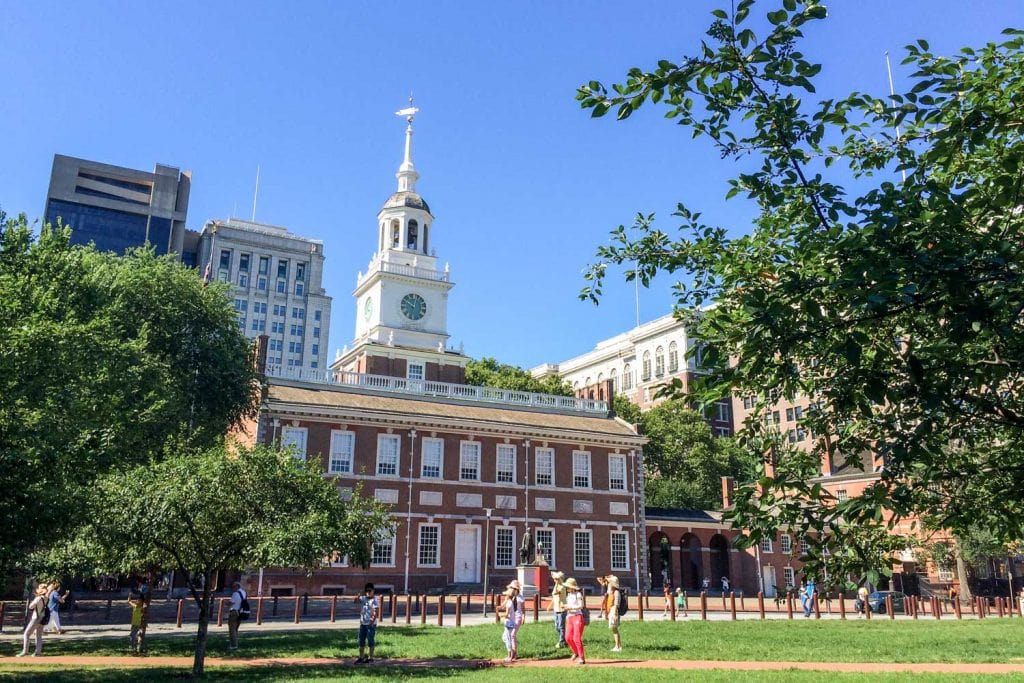
National Historic Sites (76)
The various national historic sites cover all kinds of significant historic figures, locations and occurrences.
They preserve sites related to American people as different as authors, civil rights leaders, presidents and other historically important persons. These sites range from birthplaces and homes to battlefields, forts and Native American ruins.
- Allegheny Portage Railroad National Historic Site, Pennsylvania
- Amache National Historic Site, Colorado
- Andersonville National Historic Site, Georgia
- Andrew Johnson National Historic Site, Tennessee
- Bent’s Old Fort National Historic Site, Colorado
- Blackwell School National Historic Site, Texas
- Boston African American National Historic Site, Massachusetts
- Carl Sandburg Home National Historic Site, North Carolina
- Carter G. Woodson Home National Historic Site, District of Columbia
- Charles Pinckney National Historic Site, South Carolina
- Christiansted National Historic Site, Virgin Islands
- Clara Barton National Historic Site, Maryland
- Edgar Allan Poe National Historic Site, Pennsylvania
- Eisenhower National Historic Site, Pennsylvania
- Eleanor Roosevelt National Historic Site, New York
- Eugene O’Neill National Historic Site, California
- First Ladies National Historic Site, Ohio
- Ford’s Theatre National Historic Site, District of Columbia
- Fort Bowie National Historic Site, Arizona
- Fort Davis National Historic Site, Texas
- Fort Laramie National Historic Site, Wyoming
- Fort Larned National Historic Site, Kansas
- Fort Point National Historic Site, California
- Fort Raleigh National Historic Site, North Carolina
- Fort Scott National Historic Site, Kansas
- Fort Smith National Historic Site, Arkansas and Oklahoma
- Fort Union Trading Post National Historic Site, Montana and North Dakota
- Fort Vancouver National Historic Site, Washington
- Frederick Douglass National Historic Site, District of Columbia
- Frederick Law Olmsted National Historic Site, Massachusetts
- Friendship Hill National Historic Site, Pennsylvania
- Grant-Kohrs Ranch National Historic Site, Montana
- Hampton National Historic Site, Maryland
- Harry S Truman National Historic Site, Missouri
- Herbert Hoover National Historic Site, Iowa
- Home of Franklin D. Roosevelt National Historic Site, New York
- Hopewell Furnace National Historic Site, Pennsylvania
- Honouliuli National Historic Site, Hawaii
- Hubbell Trading Post National Historic Site, Arizona
- James A. Garfield National Historic Site, Ohio
- John Fitzgerald Kennedy National Historic Site, Massachusetts
- John Muir National Historic Site, California
- Knife River Indian Villages National Historic Site, North Dakota
- Lincoln Home National Historic Site, Illinois
- Little Rock Central High School National Historic Site, Arkansas
- Longfellow – Washington’s Headquarters National Historic Site, Massachusetts
- Maggie L. Walker National Historic Site, Virginia
- Manzanar National Historic Site, California
- Martin Van Buren National Historic Site, New York
- Mary McLeod Bethune Council House National Historic Site, District of Columbia
- Minidoka National Historic Site, Idaho
- Minuteman Missile National Historic Site, South Dakota
- New Philadelphia National Historic Site, Illinois
- Nicodemus National Historic Site, Kansas
- Ninety Six National Historic Site, South Carolina
- Pennsylvania Avenue National Historic Site, District of Columbia
- President William Jefferson Clinton Birthplace Home National Historic Site, Arkansas
- Pu’ukoholā Heiau National Historic Site, Hawaii
- Sagamore Hill National Historic Site, New York
- Saint Paul’s Church National Historic Site, New York
- Salem Maritime National Historic Site, Massachusetts
- San Juan National Historic Site, Puerto Rico
- Sand Creek Massacre National Historic Site, Colorado
- Saugus Iron Works National Historic Site, Massachusetts
- Springfield Armory National Historic Site, Massachusetts
- Steamtown National Historic Site, Pennsylvania
- Theodore Roosevelt Birthplace National Historic Site, New York
- Theodore Roosevelt Inaugural National Historic Site, New York
- Thomas Stone National Historic Site, Maryland
- Tuskegee Airmen National Historic Site, Alabama
- Tuskegee Institute National Historic Site, Alabama
- Ulysses S. Grant National Historic Site, Missouri
- Vanderbilt Mansion National Historic Site, New York
- Washita Battlefield National Historic Site, Oklahoma
- Whitman Mission National Historic Site, Washington
- William Howard Taft National Historic Site, Ohio
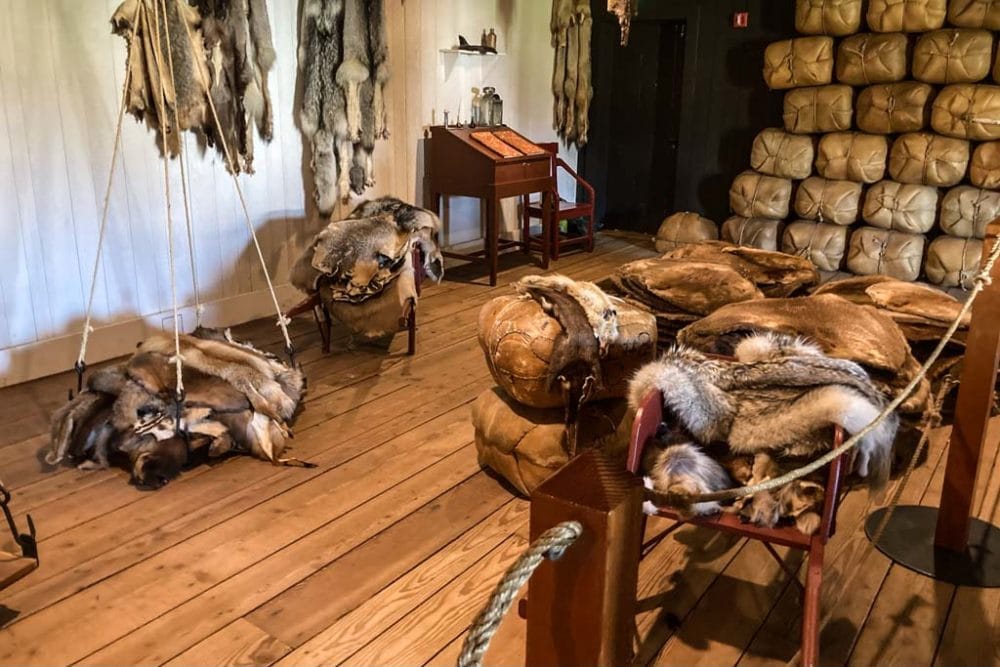
International Historic Sites (1)
The only one of its kind in the national parks system, the international historic site is relevant to both American and Canadian history.
National Lakeshores (3)
Preserving natural resources, as well as providing water-based recreation opportunities, national lakeshores are found on the shores of freshwater lakes. They may also include offshore islands. All current national lakeshores are on the Great Lakes.
- Apostle Islands National Lakeshore, Wisconsin
- Pictured Rocks National Lakeshore, Michigan
- Sleeping Bear Dunes National Lakeshore, Michigan
National Seashores (10)
Similar to lakeshores, national seashores preserve a stretch of coastline and may also encompass islands and islets. They are on the coasts of seas and oceans and you can find them on America’s Pacific, Atlantic and Gulf coasts.
- Assateague Island National Seashore, Maryland and Virginia
- Canaveral National Seashore, Florida
- Cape Cod National Seashore, Massachusetts
- Cape Hatteras National Seashore, North Carolina
- Cape Lookout National Seashore, North Carolina
- Cumberland Island National Seashore, Georgia
- Fire Island National Seashore, New York
- Gulf Islands National Seashore, Florida and Mississippi
- Padre Island National Seashore, Texas
- Point Reyes National Seashore, California
National Rivers (3)
National rivers preserve free-flowing rivers and their shoreline environment. Additionally, according to the National Park Service, they must also contain at least one remarkable natural, cultural or recreational value.
National rivers have to flow naturally and be free from major changes to their appearance, including dams and diversions.
- Big South Fork National River and Recreation Area, Kentucky and Tennessee
- Buffalo National River, Arkansas
- Mississippi National River and Recreation Areas, Minnesota
National Wild and Scenic Rivers and Riverways (11)
Essentially the same as national rivers, national wild and scenic rivers and waterways also refer to pristine rivers. These rivers and streams must be unaltered and include at least one value of exceptional cultural, natural or recreational importance.
National rivers, wild and scenic rivers, and scenic riverways also offer hiking, boating and hunting opportunities.
- Alagnak Wild River, Alaska
- Bluestone National Scenic River, West Virginia
- Middle Delaware National Scenic River, New Jersey, New York, and Pennsylvania
- Great Egg Harbor National Scenic and Recreational River, New Jersey
- Missouri National Recreational River, Nebraska and South Dakota
- Niobrara National Scenic River, Nebraska
- Obed Wild and Scenic River, Tennessee
- Ozark National Scenic Riverways, Missouri
- Rio Grande Wild and Scenic River, Texas
- Saint Croix National Scenic Riverway, Minnesota and Wisconsin
- Upper Delaware Scenic and Recreational River, New York and Pennsylvania
National Scenic Trails (6)
Generally, national scenic trails are long-distance hiking trails that run through places of outstanding natural beauty.
(Additionally, there are also numerous national historic trails, which run along original travel routes of national significance. Examples are the Oregon Trail, the Trail of Tears, the Lewis and Clark Trail, and the Santa Fe Trail. These national historic trails, however, are not officially a part of the NPS system, but are considered “related areas”.)
- Appalachian National Scenic Trail, Maine to Georgia (14 states)
- Ice Age National Scenic Trail, Wisconsin
- Natchez Trace National Scenic Trail, Alabama, Mississippi, and, Tennessee
- New England National Scenic Trail, Connecticut and Massachusetts
- North Country National Scenic Trail, Vermont to North Dakota
- Potomac Heritage National Scenic Trail, District of Columbia, Pennsylvania, and Virginia

National Memorials (31)
The national memorial designation is typically used for areas that are mainly commemorative. They don’t necessarily have to be historically associated to the person they commemorate, but can also be built after their subject has died, such as the Lincoln Memorial.
The names of several of these National Park Service units don’t include the full “national memorial”, but they’re still official national memorials.
- Arkansas Post National Memorial, Arkansas
- Arlington House, The Robert E. Lee Memorial, Virginia
- Chamizal National Memorial, Texas
- Coronado National Memorial, Arizona
- Dwight D. Eisenhower Memorial, District of Columbia
- De Soto National Memorial, Florida
- Federal Hall National Memorial, New York
- Flight 93 National Memorial, Pennsylvania
- Fort Caroline National Memorial, Florida
- Franklin Delano Roosevelt Memorial, District of Columbia
- General Grant National Memorial, New York
- Hamilton Grange National Memorial, New York
- Johnstown Flood National Memorial, Pennsylvania
- Korean War Veterans Memorial, District of Columbia
- Lincoln Boyhood National Memorial, Indiana
- Lincoln Memorial, District of Columbia
- Lyndon Baines Johnson Memorial Grove on the Potomac, District of Columbia
- Martin Luther King Jr. Memorial, District of Columbia
- Mount Rushmore National Memorial, South Dakota
- Pearl Harbor National Memorial, Hawaii
- Perry’s Victory and International Peace Memorial, Ohio
- Port Chicago Naval Magazine National Memorial, California
- Roger Williams National Memorial, Rhode Island
- Thaddeus Kosciuszko National Memorial, Pennsylvania
- Theodore Roosevelt Island, District of Columbia
- Thomas Jefferson Memorial, District of Columbia
- Vietnam Veterans Memorial, District of Columbia
- Washington Monument, District of Columbia
- World War I Memorial, District of Columbia
- World War II Memorial, District of Columbia
- Wright Brothers National Memorial, North Carolina
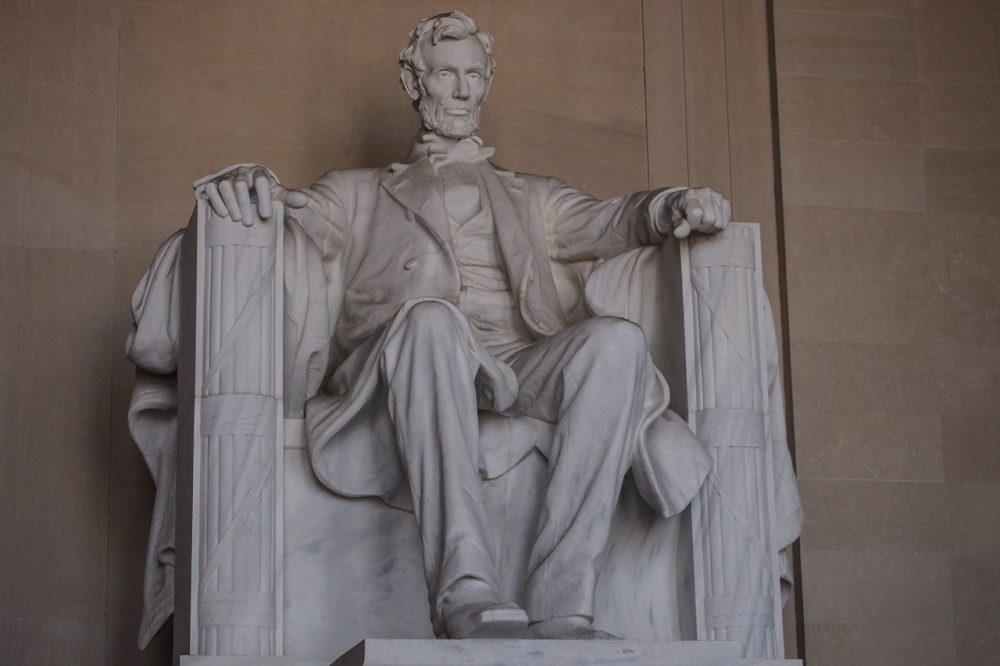
National Parkways (4)
National parkways preserve the stretch of land lining scenic roads. Not designed for high-speed travel, they run “through areas of scenic interest” and are meant for sightseeing.
Note that other national parks may also include a national parkway, such as the Colonial Parkway in Colonial National Historical Park and the Foothills Parkway in Great Smoky Mountains National Park.
- Blue Ridge Parkway, North Carolina and Virginia
- George Washington Memorial Parkway, District of Columbia, Maryland, and Virginia
- John D. Rockefeller, Jr. Memorial Parkway, Wyoming
- Natchez Trace Parkway, Mississippi
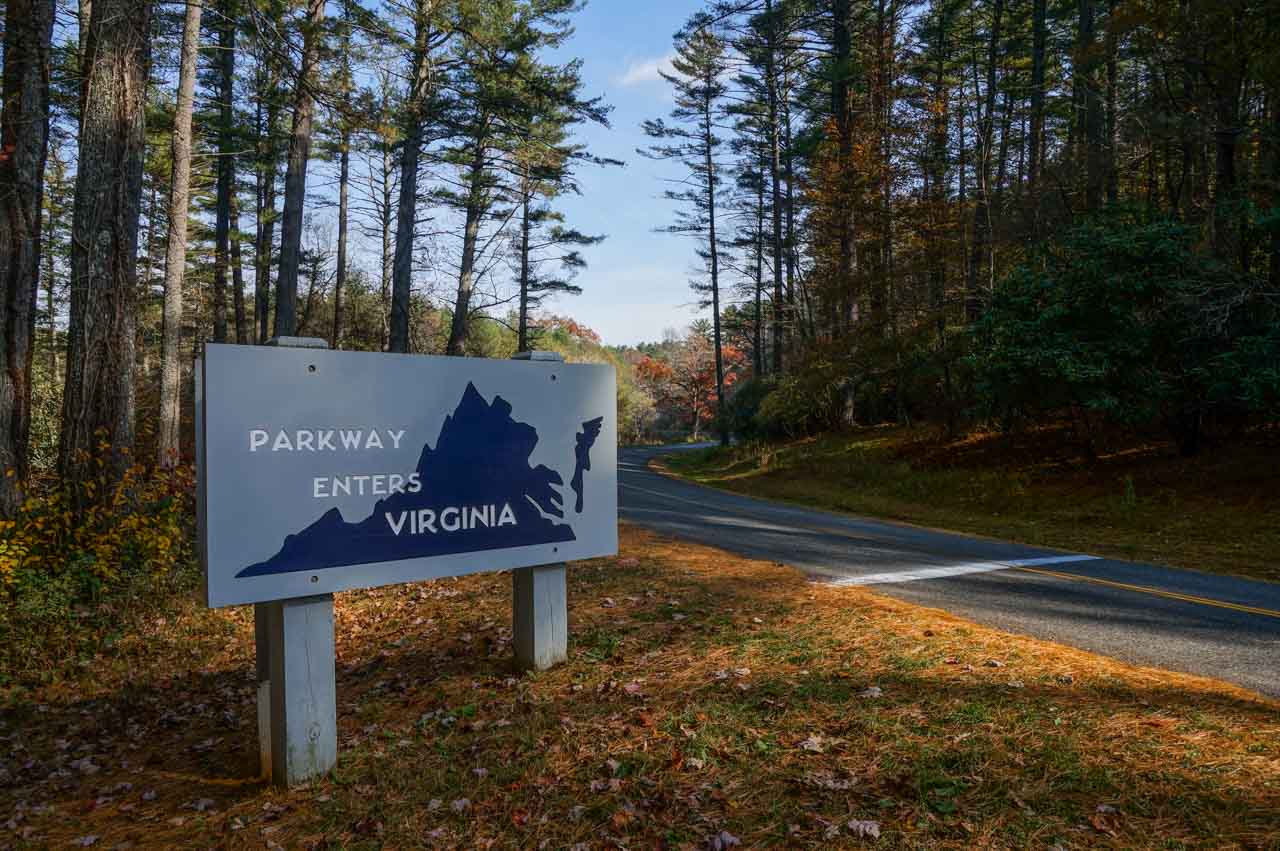
National Monuments (86)
The largest of all National Park Service designations, national monuments preserve one or more resource of national significance. This could be a cultural, historical, urban, architectural or natural area.
National monuments are generally smaller than national parks and less diverse. Yet, they do include numerous major U.S. landmarks, from Devils Tower and Muir Woods to the Statue of Liberty and Little Bighorn Battlefield.
- African Burial Ground National Monument, New York
- Agate Fossil Beds National Monument, Nebraska
- Alibates Flint Quarries National Monument, Texas
- Aniakchak National Monument, Alaska
- Aztec Ruins National Monument, New Mexico
- Bandelier National Monument, New Mexico
- Belmont-Paul Women’s Equality National Monument, District of Columbia
- Birmingham Civil Rights National Monument, Alabama
- Booker T. Washington National Monument, Virginia
- Buck Island Reef National Monument, Virgin Islands
- Cabrillo National Monument, California
- Camp Nelson National Monument, Kentucky
- Canyon de Chelly National Monument, Arizona
- Cape Krusenstern National Monument, Alaska
- Capulin Volcano National Monument, New Mexico
- Carlisle Federal Indian Boarding School National Monument, Pennsylvania
- Casa Grande Ruins National Monument, Arizona
- Castillo de San Marcos National Monument, Florida
- Castle Clinton National Monument, New York
- Castle Mountains National Monument, California
- Cedar Breaks National Monument, Utah
- César E. Chávez National Monument, California
- Charles Young Buffalo Soldiers National Monument, Ohio
- Chiricahua National Monument, Arizona
- Colorado National Monument, Colorado
- Craters of the Moon National Monument, Idaho
- Devils Postpile National Monument, California
- Devils Tower National Monument, Wyoming
- Dinosaur National Monument, Colorado and Utah
- Effigy Mounds National Monument, Iowa
- El Malpais National Monument, New Mexico
- El Morro National Monument, New Mexico
- Emmet Till and Mamie Till-Mobley National Monument, Illinois and Mississippi
- Florissant Fossil Beds National Monument, Colorado
- Fort Frederica National Monument, Georgia
- Fort Matanzas National Monument, Florida
- Fort McHenry National Monument and Historic Shrine, Maryland
- Fort Monroe National Monument, Virginia
- Fort Pulaski National Monument, Georgia
- Fort Stanwix National Monument, New York
- Fort Union National Monument, New Mexico
- Fossil Butte National Monument, Wyoming
- Frances Perkins National Monument, Maine
- Freedom Riders National Monument, Alabama
- George Washington Birthplace National Monument, Virginia
- George Washington Carver National Monument, Missouri
- Gila Cliff Dwellings National Monument, New Mexico
- Governors Island National Monument, New York
- Grand Portage National Monument, Minnesota
- Hagerman Fossil Beds National Monument, Idaho
- Hohokam Pima National Monument, Arizona
- Hovenweep National Monument, Colorado and Utah
- Jewel Cave National Monument, South Dakota
- John Day Fossil Beds National Monument, Oregon
- Katahdin Woods and Waters National Monument, Maine
- Lava Beds National Monument, California
- Little Bighorn Battlefield National Monument, Montana
- Medgar and Myrlie Evers Home National Monument, Mississippi
- Mill Springs Battlefield National Monument, Kentucky
- Montezuma Castle National Monument, Arizona
- Muir Woods National Monument, California
- Natural Bridges National Monument, Utah
- Navajo National Monument, Arizona
- Oregon Caves National Monument and Preserve, Oregon
- Organ Pipe Cactus National Monument, Arizona
- Petroglyph National Monument, New Mexico
- Pipe Spring National Monument, Arizona
- Pipestone National Monument, Minnesota
- Poverty Point National Monument, Louisiana
- Rainbow Bridge National Monument, Utah
- Russell Cave National Monument, Alabama
- Salinas Pueblo Missions National Monument, New Mexico
- Scotts Bluff National Monument, Nebraska
- Springfield 1908 Race Riot National Monument, Illinois
- Statue of Liberty National Monument, New Jersey and New York
- Stonewall National Monument, New York
- Sunset Crater Volcano National Monument, Arizona
- Timpanogos Cave National Monument, Utah
- Tonto National Monument, Arizona
- Tule Lake National Monument, California
- Tule Springs Fossil Beds National Monument, Nevada
- Tuzigoot National Monument, Arizona
- Virgin Islands Coral Reef National Monument, Virgin Islands
- Waco Mammoth National Monument, Texas
- Walnut Canyon National Monument, Arizona
- Wupatki National Monument, Arizona
- Yucca House National Monument, Colorado
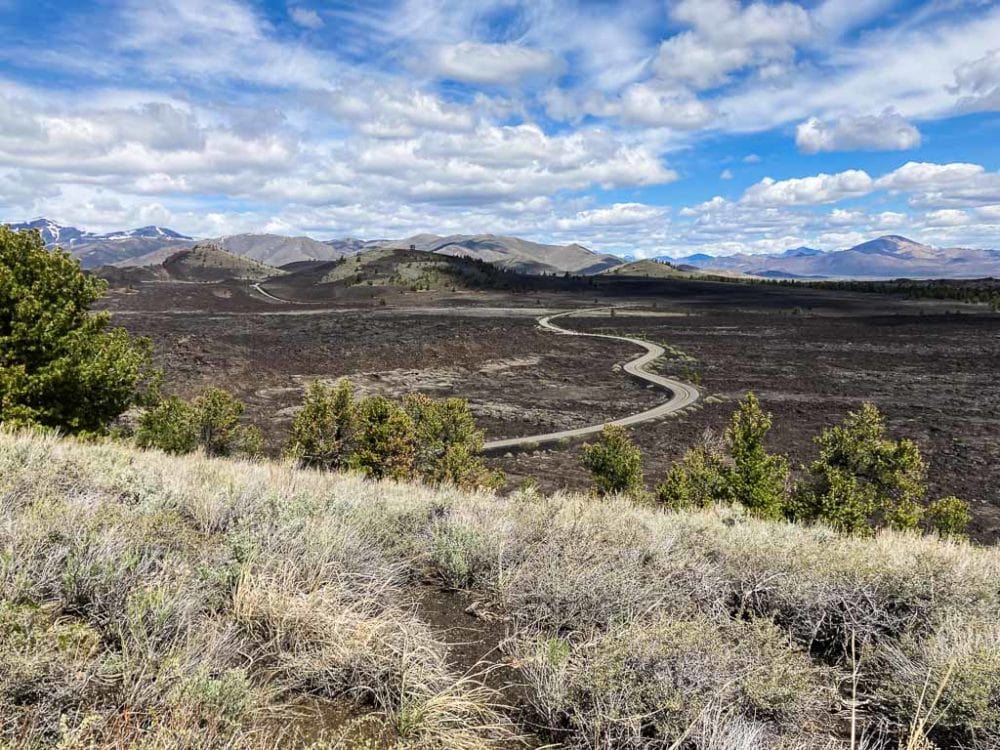
National Recreation Areas (18)
National recreation areas originally encompassed the land surrounding reservoirs created by dams, which were built by other federal agencies. Great examples of such man-made lakes are Lake Mead and Ross Lake.
Nowadays, however, this designation is much broader and includes areas set aside for recreation, often in or near major cities like New York City, Boston, San Francisco and Los Angeles.
- Amistad National Recreation Area, Texas
- Bighorn Canyon National Recreation Area, Montana and Wyoming
- Boston Harbor Islands National Recreation Area, Massachusetts
- Chattahoochee River National Recreation Area, Georgia
- Chickasaw National Recreation Area, Oklahoma
- Curecanti National Recreation Area, Colorado
- Delaware Water Gap National Recreation Area, New Jersey and Pennsylvania
- Gateway National Recreation Area, New Jersey and New York
- Gauley River National Recreation Area, West Virginia
- Glen Canyon National Recreation Area, Arizona and Utah
- Golden Gate National Recreation Area, California
- Lake Chelan National Recreation Area, Washington
- Lake Mead National Recreation Area, Arizona and Nevada
- Lake Meredith National Recreation Area, Texas
- Lake Roosevelt National Recreation Area, Washington
- Ross Lake National Recreation Area, Washington
- Santa Monica Mountains National Recreation Area, California
- Whiskeytown-Shasta-Trinity National Recreation Area, California
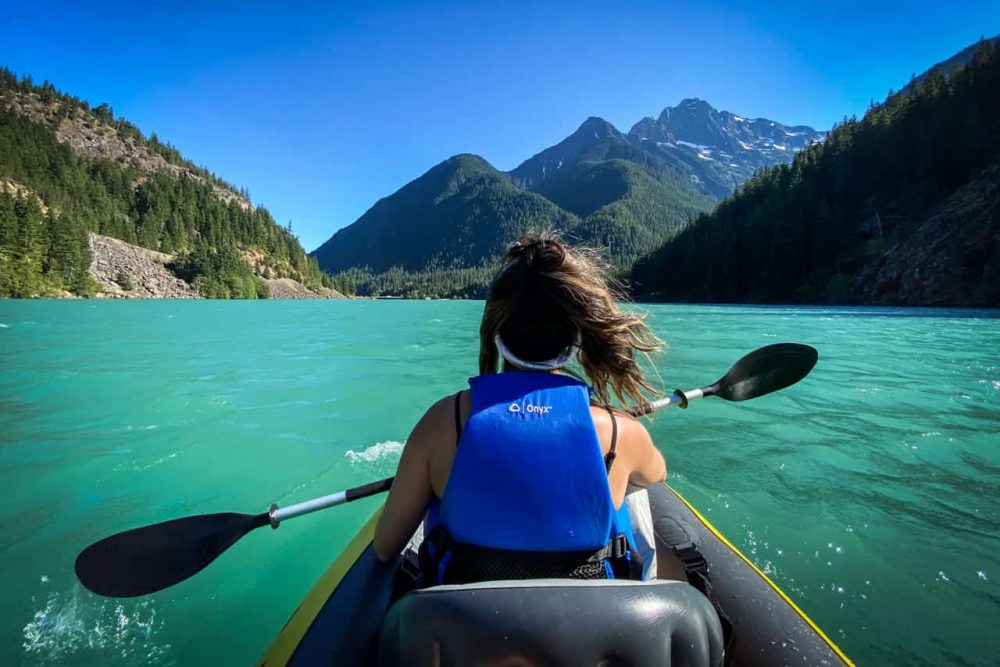
National Preserves (19)
The first national preserves ever created were Big Thicket and Big Cypress in 1974. This designation is for areas with resources that deserve extra protection.
However, if they don’t cause harm to the area’s natural values, activities like hunting, fishing and sometimes even mining are allowed in national preserves. They’re one of only a few National Park Service designations where you may be able to hunt.
- Aniakchak National Preserve, Alaska
- Bering Land Bridge National Preserve, Alaska
- Big Cypress National Preserve, Florida
- Big Thicket National Preserve, Texas
- Craters of the Moon National Preserve, Idaho
- Denali National Preserve, Alaska
- Gates of the Arctic National Preserve, Alaska
- Glacier Bay National Preserve, Alaska
- Great Sand Dunes National Preserve, Colorado
- Katmai National Preserve, Alaska
- Lake Clark National Preserve, Alaska
- Little River Canyon National Preserve, Alabama
- Mojave National Preserve, California
- Noatak National Preserve, Alaska
- Tallgrass Prairie National Preserve, Kansas
- Timucuan Ecological and Historic Preserve, Florida
- Valles Caldera National Preserve, New Mexico
- Wrangell-St. Elias National Preserve, Alaska
- Yukon-Charley Rivers National Preserve, Alaska
National Reserves (2)
Similar to national preserves, national reserves offer additional protection to a certain area. These parks consist of land managed by a variety of agencies, including federal land, state parks, local parks and even private property.
- City of Rocks National Reserve, Idaho
- Ebey’s Landing National Historical Reserve, Washington
National Parks (63)
The “actual” national parks are the crown jewels in the National Park Service system. Currently, there are 63 national parks in America.
With only a couple of exceptions, these iconic parks generally encompass various resources, both natural and cultural, and preserve large areas of land and/or water. They include some of the world’s greatest landscapes and natural landmarks, such as Yellowstone, the Grand Canyon, Denali, the Everglades and Death Valley.
- Acadia National Park, Maine
- Arches National Park, Utah
- Badlands National Park, South Dakota
- Big Bend National Park, Texas
- Biscayne National Park, Florida
- Black Canyon of the Gunnison National Park, Colorado
- Bryce Canyon National Park, Utah
- Canyonlands National Park, Utah
- Capitol Reef National Park, Utah
- Carlsbad Caverns National Park, New Mexico
- Channel Islands National Park, California
- Congaree National Park, South Carolina
- Crater Lake National Park, Oregon
- Cuyahoga Valley National Park, Ohio
- Death Valley National Park, California and Nevada
- Denali National Park, Alaska
- Dry Tortugas National Park, Florida
- Everglades National Park, Florida
- Gates of the Arctic National Park, Alaska
- Gateway Arch National Park, Missouri and Illinois
- Glacier Bay National Park, Alaska
- Glacier National Park, Montana
- Grand Canyon National Park, Arizona
- Grand Teton National Park, Wyoming
- Great Basin National Park, Nevada
- Great Sand Dunes National Park, Colorado
- Great Smoky Mountains National Park, North Carolina and Tennessee
- Guadalupe Mountains National Park, Texas
- Haleakalā National Park, Hawaii
- Hawai’i Volcanoes National Park, Hawaii
- Hot Springs National Park, Arkansas
- Indiana Dunes National Park, Indiana
- Isle Royale National Park, Michigan
- Joshua Tree National Park, California
- Katmai National Park, Alaska
- Kenai Fjords National Park, Alaska
- Kings Canyon National Park, California
- Kobuk Valley National Park, Alaska
- Lake Clark National Park, Alaska
- Lassen Volcanic National Park, California
- Mammoth Cave National Park, Kentucky
- Mesa Verde National Park, Colorado
- Mount Rainier National Park, Washington
- National Park of American Samoa, American Samoa
- New River Gorge National Park and Preserve, West Virginia
- North Cascades National Park, Washington
- Olympic National Park, Washington
- Petrified Forest National Park, Arizona
- Pinnacles National Park, California
- Redwood National Park, California
- Rocky Mountain National Park, Colorado
- Saguaro National Park, Arizona
- Sequoia National Park, California
- Shenandoah National Park, Virginia
- Theodore Roosevelt National Park, North Dakota
- Virgin Islands National Park, Virgin Islands
- Voyageurs National Park, Minnesota
- White Sands National Park, New Mexico
- Wind Cave National Park, South Dakota
- Wrangell-St. Elias National Park, Alaska
- Yellowstone National Park, Idaho, Montana, and Wyoming
- Yosemite National Park, California
- Zion National Park, Utah
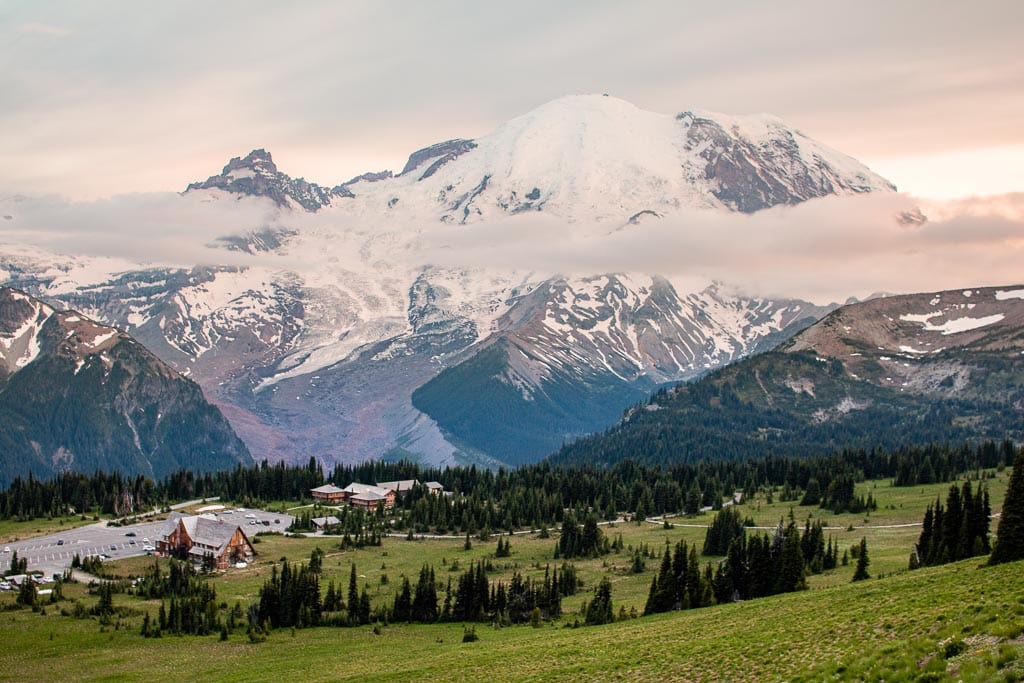
Other Park Designations (11)
In addition to all National Park Service units above, there are almost a dozen other categories, too. These range from gardens and parks to urban areas. All are located in the greater Washington, D.C. area, including sites in Maryland and Virginia.
- Catoctin Mountain Park, Maryland
- Constitution Gardens, District of Columbia
- Fort Washington Park, Maryland
- Greenbelt Park, Maryland
- National Capital Parks – East, District of Columbia
- National Mall and Memorial Parks, District of Columbia
- Piscataway Park, Maryland
- Prince William Forest Park, Virginia
- Rock Creek Park, District of Columbia
- White House, District of Columbia
- Wolf Trap National Park for the Performing Arts, Virginia

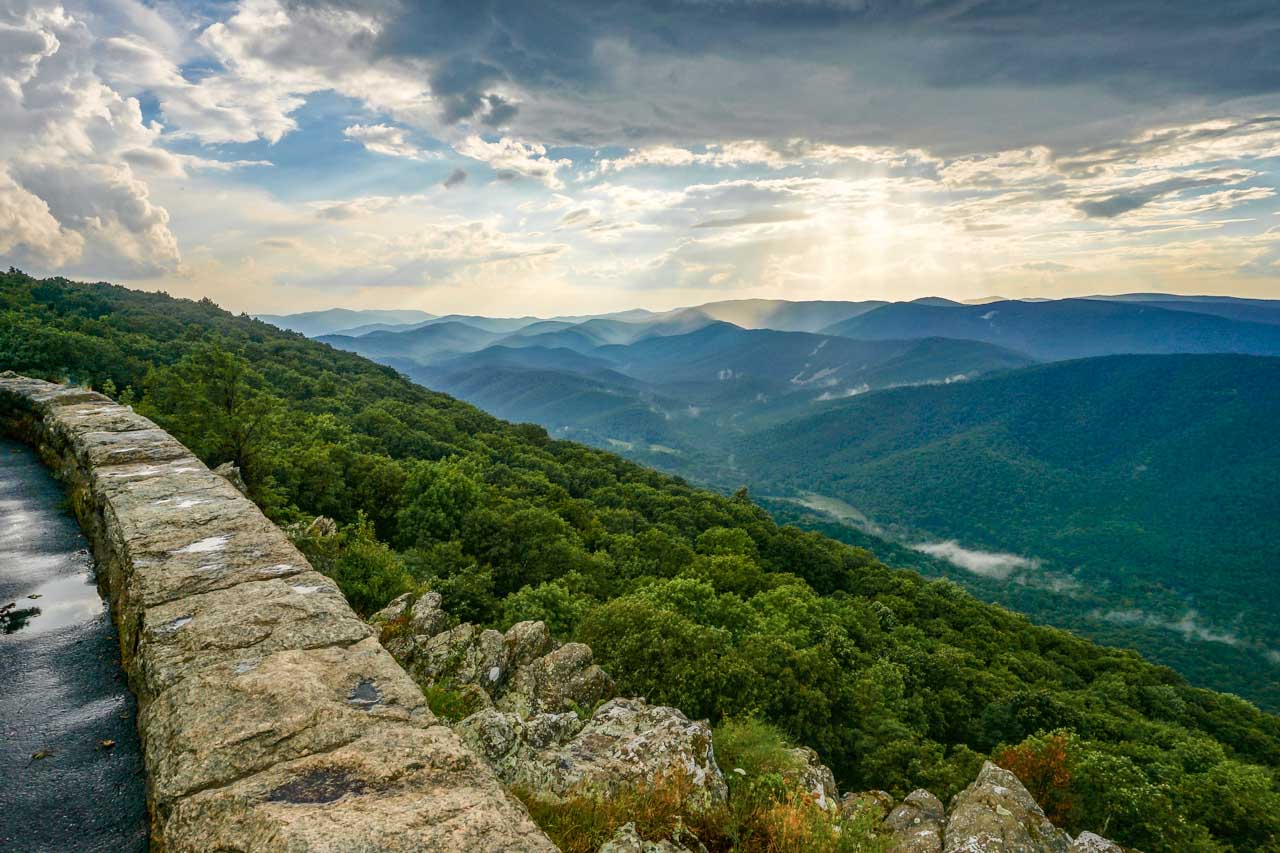



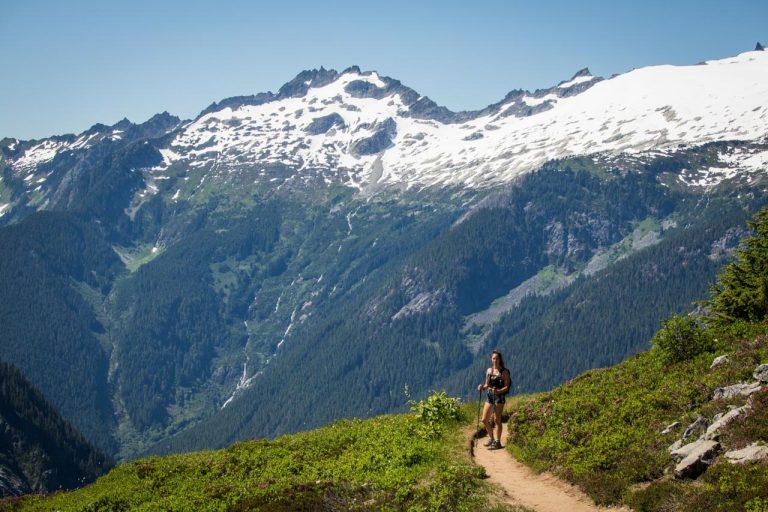


Dry well done. My wife and I have visited the parks for the past 40 + years. Thanks.
Thanks for this list – I like how it’s broken out by type of site. Out of the 63 National Parks, we have visited 40, so far.
Quite a nice list of what the US has to offer, thank you for creating the list. So much easier to find this list too.
Still working on making it to what I can visit and it will take a lifetime 🙂